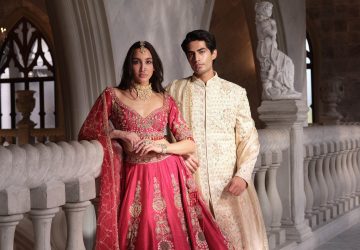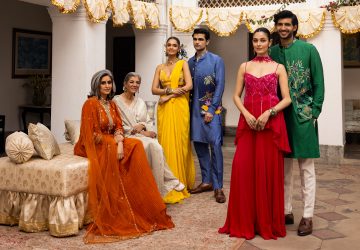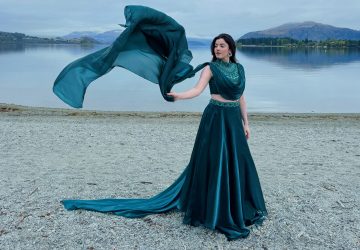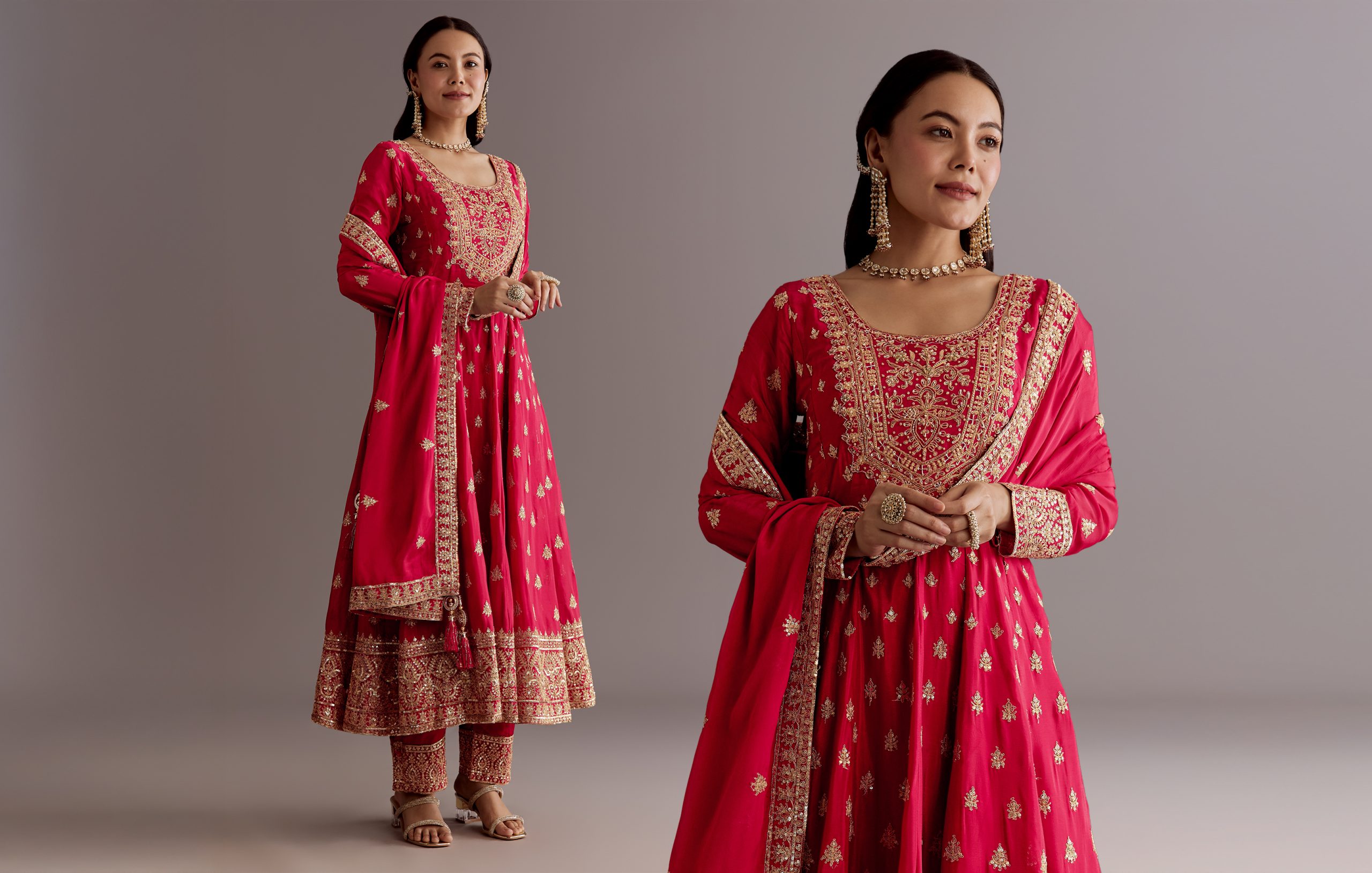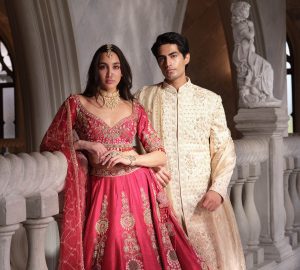Colour is a potent force in ethnic fashion, not merely as an aesthetic option, but as a deeply ingrained mode of expression. Throughout South Asia and other cultural terrains, every colour exists with its own meaning, symbolism, and tradition. These colours are sewn into the fabric of clothing worn during weddings, holidays, and rituals. Ethnic fashion is a living tapestry of history, emotion, and symbolism, crafted not only in yarn but in spirit.
This piece explores the historical connotations of colour and examines how they can be carefully reworked as part of modern ethnic clothing, respecting cultural heritage while adopting design sensibilities.
Understanding the Meaning Behind Traditional Colors
Traditional colour meanings in ethnic dress are not merely ornamental, they are symbolic of fundamental cultural assumptions and social norms. Symbolism of colour represents everything from life and death to happiness and spirituality, and also influences how one presents oneself on important occasions.
Red: The Color of Love, Vitality, and Celebration
Red has a sacred position in ethnic wear, particularly in Indian culture. Red is used to signify love, fecundity, and potency, making it the most widespread choice for wedding wear. Red sari or lehenga is also traditionally used on the occasion of weddings to bring blessings for prosperity and marital happiness. Outside of nuptial occasions, red also appears in ceremonial wear at festivals, pujas, and other sacred events, pointing toward its position as a symbol of colour of extreme emotional and religious value.
Yellow: A Symbol of Radiance, Wisdom, and Prosperity
Yellow is also connected with light, knowledge, and positive energy. It is widely used during spring celebrations such as Vasant Panchami and Gudi Padwa, symbolizing renewal, good luck, and happiness. Yellow plays an integral role in pre-wedding ceremonies, particularly the Haldi ceremony, due to its spiritual correlation with turmeric, representing purity and protection. Colour meaning yellow’s lightness makes it adaptable for religious as well as social celebrations, proving to be a spiritually powerful colour.
Green and Blue: The Hues of Renewal and Serenity
Green is a mirror to nature, growth, and fertility. Green is also a harmonious colour and is often used for religious festivals and Islamic celebrations such as Eid. Its symbolic association with life and rebirth makes it a popular colour in rituals associated with new beginnings.
Blue, however, speaks of serenity, profundity, and spiritual contemplation. While not classically used in Hindu weddings by traditional association within mythological stories, blue has become increasingly popular with its cool sophistication and stately look. Blue is frequently employed in modern ethnic wear to bring in an air of equilibrium and peace.
Incorporating Traditional Colors into Modern Ethnic Fashion
Although these colour meanings have centuries of connotation, they are also versatile in the present trends. Contemporary ethnic style thrives on reinventing traditional couture pieces without losing their cultural origin.
Blending Symbolic Colors with Contemporary Silhouettes
Modern ethnic wear fashion designers are more and more incorporating legacy colour schemes into test cuts and geometries. A blood-red blazer-style kurta or a mustard-yellow draped sari-gown demonstrates the way heritage colours may be maintained in risky, fresh shapes. The solution is in symbolic integration, adopting colour as the focal point while reworking the silhouette to satisfy changing tastes.
Statement Accessories and Color-Based Styling
Accessories subtly symbolise colour messages too. The green beaded clutch could subtly point to fertility, but oxidised jewellery with blue stones may be symbolic of being peaceful and safe. These are many times intentionally added by stylists, ensuring every accent shade relates to the theme or message of the overall look.
Selecting Colors by Occasion: A Symbolic Guide
Ethnic wear is heavily occasion-related. Correctly used colours can amplify the significance of an event:
- Weddings & Engagements: Deep golds, maroons, and reds rule for their symbolic and kingly connotations.
- Festivals & Celebrations: Vibrant colors such as magenta, yellow, and orange convey happiness, extravagance, and prosperity.
- Religious Ceremonies: Colour meanings resonating with white (purity), saffron (sacrifice), and green (harmony) are typical.
- Everyday Ethnic Chic: Soft pastels and earthy shades update classic tones to wear in everyday or office life.
Conclusion
Ethnic fashion is more than gaudy fabrics and embroidery, it’s a cultural conversation through symbolism of colour. Each colour is imbued with meaning, from the scarlet of a bridal dupatta to the emerald of a Mehendi outfit. Knowing these symbolic meanings allows contemporary wearers not only to make fashionable choices but also choices deeply respectful of tradition.
As the boundaries between old and new continue to blur, colour remains the constant, an enduring language of the soul stitched into the fabric of our identity.
FAQs
What does each color symbolize in ethnic fashion?
Each hue reflects emotions—red for love, yellow for joy, green for life, blue for calm.
How do I choose colors based on the occasion?
Pick vibrant colors for festivals, deep tones for ceremonies, and soft shades for casual elegance.
Are certain colors considered lucky for weddings?
Yes! Red, gold, and maroon are traditionally lucky and signify prosperity and marital bliss.
How can I modernize traditional color palettes?
Mix heritage colors with modern cuts—like crop tops, dhoti pants, or jackets.
What are the best color combinations for ethnic wear?
Classic combos include red-gold, yellow-green, royal blue-white, and pink-orange.
Does color psychology play a role in fashion choices?
Absolutely. Colors affect mood and perception, making them powerful styling tools.
Can bold colors be styled for minimalist ethnic looks?
Yes! Pair a bold piece with neutrals or muted accessories to balance your outfit.
![]()
